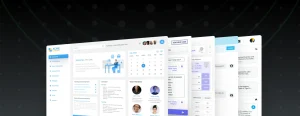In order to make use of the internet, networks must be interconnected. Wide area connections started over analog phone lines. These connections used modem technology. Both asynchronous and synchronous modems used special timing bits to ensure data was received in a consistent manner. However, analog connections were point to point and were difficult to listen to. To overcome these limitations, the internet began to adopt new standards to simplify the interconnection process.
The Internet is made up of many independent networks that interconnect to form a single global network. These networks are subject to various technical standards and agreements with their neighbors. The network doesn’t need a physical relationship with another network to communicate, but it must connect to the other network to become part of the global internet. While all interconnection arrangements may sound similar, there are some differences. The most common type is interconnection for a fee.
A third type of common internet network interconnection involves the establishment of peering arrangements. These peering agreements allow internet service providers to carry each other’s traffic without paying any fee for it. However, this type of arrangement is rarely used because larger high-value networks might refuse to connect to smaller ones. Nonetheless, it is necessary to consider the perceived benefits of the interconnection. There are many benefits of peering, and ISPs tend to peer with networks of similar scale.
Despite the fact that peering is necessary for full connectivity, some ISPs do not wish to share their traffic with any peers. Transit services provide a much cheaper solution to this problem. By providing traffic to all peers and subscribers, transit services connect a client’s ISP to the entire Internet. Alternatively, network operators may peer with one another or purchase transit service for their peers. It’s important to understand the benefits and disadvantages of each method.
The future of common internet network interconnection is still in the early stages. While future Internet structure may have a different structure, the backbone networks and access speeds are likely to increase exponentially. Today’s backbone networks are able to handle up to a billion bits of data per second. By the end of the next decade, the average Internet will be able to carry as many as a trillion bits per second. The world-wide web will be more valuable than ever.
In addition to this, there are also changes in the IP address used. An IPv6 address has a unique identifier, which is called a “prefix”. By utilizing the prefix 0:0, a device is able to communicate with the Internet. The default gateway is an IPv4 address. For IPv6 addresses, a corresponding prefix is FFFF/96. If a user wishes to receive an IPv6 address, they should use a /0/128 instead.
OneWebDay, an annual event commemorating the Internet’s sixth birthday, is coming up this Thursday. At the meeting, keynote speakers include the founder of Allied Fiber, Craig Settles, host of the radio show Gigabit Nation, and Milo Medin, Google’s Vice President for Access Services and lead on Google’s fiber project. The event was moderated by Michael Nelson. The recording of the conference has been archived below.






More Stories
Beyond Google: Your Guide to Privacy-Focused Search and Anonymous Browsing
Internet Privacy Tools Beyond Mainstream VPNs and Browsers
The Role of Blockchain in Modern Web Authentication